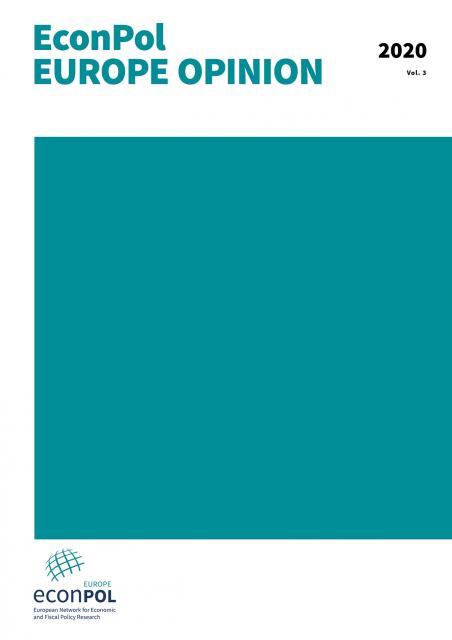
Covid-19 Throws Us Into an Unprecedented Debt Crisis, But It’s One We Can Rise From
Exceptional measures will be needed to exit the economic crisis triggered by the coronavirus, which will see national governments at the forefront of business support and demand stimulation plans.
All this will lead to a sharp increase in public debt of dimensions never seen in the post-war period.
The International Monetary Fund (IMF) predicts that between now and year-end, despite the gradual resumption of economic activities, public debt will increase by around $6 trillion in rich countries: a surge that dwarfs the leap occurred during the 2008-2009 financial crisis.
Given that ten years ago the increase in public debt triggered the so-called sovereign debt crisis, led to a second recession in Europe and brought the euro-zone to the brink of collapse, should we brace ourselves and prepare for the worst?
How can we guarantee adequate support for the real economy without jeopardizing the sustainability of public finances? This is especially important as in a post-COVID world, people are unlikely to accept cuts in public expenditures in healthcare.
The main difference with respect to 10 years ago, is the role of central banks, which have indicated their willingness to "monetize" part of the new debt, i.e. buy (directly or indirectly) a portion of the securities issued by the states to finance the recovery.
In normal times, this would be taboo, because it can lead to spiraling inflation, as happened in the 1970s. But these are not normal times, and moderate inflation can help reduce the debt burden.
A few considerations are in order to better qualify this statement:
- In recent years, central banks in advanced countries have already purchased large quantities of government bonds to provide liquidity to the banking system and stimulate the economy (the so-called quantitative easing). In the face of these interventions, prices have increased very little and, in fact, inflation has remained below the targets set by central banks (implicitly or explicitly, many central banks aim for an annual inflation rate of around 2%).
- The price of oil, which has often contributed to fueling inflation in the past, is at record lows and is likely to remain there for quite some time, irrespective of the production cuts engineer by OPEC.
- Economic growth is expected to rebound in 2021 and the following years, but it will take a while to get back to full speed and make up for lost output. Upward price tensions, which occur when demand outstrips supply, are unlikely to arrive anytime soon.
- The cost of public debt (the interest rate paid by governments on government bonds) is very low for many countries (with some exception, Italy being the most relevant case in Europe). In this sense, this is a propitious time to issue new debt. If public intervention translates into an effective economic recovery and triggers high growth rates, then the ratio of debt to GDP will tend to go down automatically as the denominator of the debt/GDP ratio grows faster than the numerator.
All these elements suggest that debt is less problematic than in the past, and that inflation represents a very minor problem in the short to medium term. Yet, this does not mean that we can sit back and relax.
First of all, central bank support is not or granted and will not last forever. The ECB, for instance, for the moment has committed itself to a bond-buying program that extends to 2021. While it is possible that, if necessary, this type of intervention will be extended, the recent ruling by the German Constitutional Court on the legitimacy of an analogous program started in 2015 suggests that the ECB is threading on thin ice and its support cannot be taken from granted.
Second, public measures to support the economy need to be effective. Italy for example, whose debt-to-GDP ratio is projected to rise above 150%, comes from many years of anemic growth: over the past 20 years the Italian economy has grown at a rate higher than the interest paid on government bonds (the condition under which the infamous debt-to-GDP ratio would shrink automatically) in just two occasions, despite the fact that interest rates were historically low.
Last, but not least, once the coronavirus is defeated the world will face an even greater challenge: climate change. This is an area where large public investments are needed to ease the transition to a more sustainable economic system. Where the Covid-19 pandemic has represented an unprecedented global challenge, climate change and its potential effects pose an even bigger threat.
So how do we recover from the current crisis without compromising our ability to face future challenges? It is crucial to direct public spending towards initiatives that generate growth, but also contribute to solve future problems. Instead of restoring the status quo, an effort is needed to make our economies and societies more sustainable. Public investments and incentives that promote energy saving and efficiency, environmental protection, sustainable mobility can simultaneously generate employment and income and help us facing our future challenges. Similarly, taxes can be used both to repay debt and to create incentives to reduce carbon emissions (carbon tax), to limit the use of plastic (plastic tax), and to stimulate a transition to sustainability.
It’s a long and winding road, but there are not many others we can take.
Stefano Schiavo: Covid-19 Throws Us Into an Unprecedented Debt Crisis, But It’s One We Can Rise From, EconPol Opinion 33, May 2020